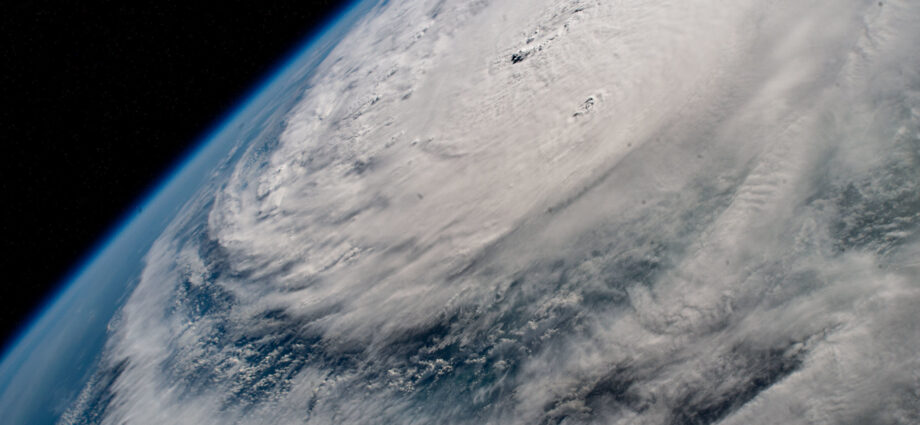
Communities can build resilience for bad weather
November 16, 2024
It’s still hurricane season in the Atlantic, and this year has been particularly devastating. Hurricane Helene left an 800-mile path of destruction, obliterating whole towns and cities as it moved northward across several states in the southern United States. Hurricane Milton quickly followed and had a devastating impact on Florida. Thousands were left without power or safe drinking water.
Storms have become more frequent and more intense in recent years. How can we better prepare and ensure that residents in hurricane-prone regions continue to have access to safe drinking water after a natural disaster?
The Impact of Climate Change on Hurricanes
Global warming helps make hurricanes more frequent and intense, with stronger wind speeds, higher storm surges, and heavier rainfall, thus posing a greater risk to water infrastructure. There are several reasons for this. Warmer ocean surface temperatures fuel more powerful hurricanes, allowing storms that develop over the ocean to strengthen more quickly and reach higher wind speeds, resulting in more destructive hurricanes when they make landfall.
Warmer conditions also increase the rate of evaporation, and a warmer atmosphere can hold more moisture. The resulting heavier rainfall and flooding can overwhelm drainage systems and water treatment infrastructure, compromising drinking water supplies.
In low-lying coastal regions, storm surge — ocean water driven inland by high winds — can compound the risk of flooding. The effects of storm surge are exacerbated by sea-level rise, so there is a higher risk of inundation, which in turn increases the vulnerability of coastal water infrastructure such as desalination plants, wastewater treatment facilities, and freshwater reservoirs.
Climate change is also causing hurricanes to move more slowly, prolonging their impact. A slower-moving storm means a longer period of exposure to high winds and heavy rains, increasing the likelihood of infrastructure damage. The number of hurricanes that are Category 3 and above is growing. Scientific models predict that the number of Category 4 and 5 hurricanes will increase. These stronger storms are more capable of causing severe damage to water infrastructure, including power outages that disrupt water treatment and distribution systems.
Vulnerability of Water Treatment Plants to Hurricanes
Hurricanes pose a major threat to water treatment plants and wastewater facilities, which are often located near coastlines or flood-prone areas. Flooding and high winds can cause equipment damage and might lead to the contamination of drinking water supplies with sewage, chemicals, and other pollutants. Power outages during storms further compound these issues by interrupting treatment, leading to water service disruptions.
Post-storm recovery can be delayed by widespread infrastructure damage, leaving communities without clean drinking water for extended periods, as we are seeing in communities across North Carolina after Hurricane Helene. This poses health and safety risks long after the storm has passed.
Preparing Water Treatment Plants for Hurricanes
As climate change continues to drive more severe weather patterns, the resilience of water infrastructure will be a critical component of disaster preparedness and recovery. Communities and water utilities must implement mitigation strategies to prepare for the increasing risks.
This includes building and upgrading water infrastructure to be more resilient to high winds and flooding as well as elevating critical facilities like water treatment plants and pump stations to minimize the risk of damage from flooding and storm surge. Water treatment facilities must also invest in backup systems to ensure continuous water treatment during power outages, with early warning systems that provide timely information on water safety and infrastructure integrity before and after storms.
Case Study: A Certified Resilient Treatment Plant
Seven Seas Water Group, a global leader in water treatment infrastructure, recently built thefirst certified resilient water treatment plant in the Caribbean. The desalination plant, which supplies water to the Harley Power Plant in St. Thomas, received a USRC Silver Earthquake Rating in 2023 for its high resilience to earthquakes and is the first water treatment facility to receive the USRC Gold Wind Rating for its wind-resistant structural design.
The Caribbean consists mostly of low-lying islands and is prone to earthquakes and hurricanes as well as sea level rise. The St. Thomas water treatment plant features elevated structures and erosion control systems to protect it from storm surges.
The growing threat of climate change has intensified the impact of hurricanes on water infrastructure. As storms become more frequent, intense, and unpredictable, water treatment plants and distribution systems face increased risks of damage and disruption. To mitigate these threats and ensure the continued availability of safe drinking water, communities must invest in resilient infrastructure and implement effective preparedness strategies.
Building resilient water infrastructure capable of withstanding high winds, storm surges, and seismic activity can prevent disruptions to the water supply and sewage treatment systems during natural disasters, ensuring access to safe drinking water and sanitation.
Protecting water infrastructure from flooding, power outages, and contamination is a challenge, but with thoughtful planning and investment in resilient infrastructure, communities can be better prepared for the storms ahead.
Subscribe to our newsletter.
This article was originally published on IMPAKTER. Read the original article.

